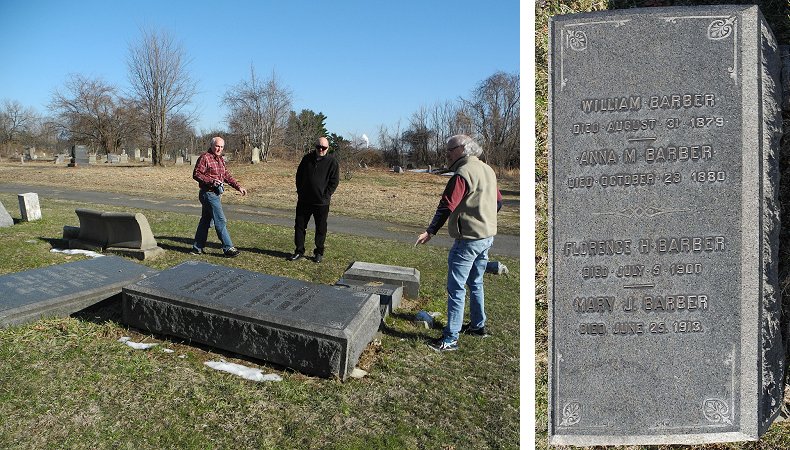5th Chief Engraver of the United States
A number of designers brought us the Liberty Seated coinage that we study and collect. Two talented men, Christian Gobrecht and William Barber, both of them Chief Engravers of the United States, had the greatest influence. Others, such as Chief Engraver James B. Longacre, and assistant engravers Robert Ball Hughes and Anthony C. Pacquet, also made contributions over the long reign of Liberty Seated Coinage.
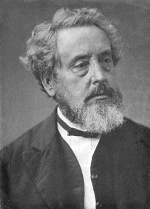 |
William Barber (1807-1879) was born in London England on May 2, 1807. He learned the art of engraving from his father, John Barber, who was proficient in the design and engraving of medals. Young William was involved in the manufacture of silver wares and was skilled in die engraving. William married Anna Maria (Anna May), and had two sons and two daughters (his eldest son, Charles E. Barber, would also become a famous engraver in his own right). In September 1852, William and Anna May moved the family to the U.S. to improve his professional prospects, and settled in New England.
| ||

William Barber patterns
His two circulating coins were both Liberty Seated motifs. His Trade dollar design is a collector favorite. When calls were made for a double dime (or twenty-cent piece), William Barber knew that a completely different design (other than Liberty Seated) would be needed to avoid confusion with the quarter. He designed a number of beautiful patterns with this in mind, but he was overruled at the last minute by the Mint Director and he hastily engraved the design that would doom the denomination to failure.

William's 20-cent patterns
His medal work was also noteworthy. He engraved the Lincoln "Broken Column" medal, remembering Lincoln's assassination. On a more upbeat note, he designed and engraved the Centennial medal, for the 1876 United States International Exposition in Philadelpha. The Pacific Railroad medal of 1869 is also a favorite, marking the completion of the trans-continental railroad.

Some of William Barber's medals
He also designed what would have been our first commemorative coin, as sketches of an 1877 quarter marking the beginning of the nation's second century. This idea never made it past the sketch phase, as commemorative circulating coins had never been issued by this time. Original William Barber sketches held by the family ever since they were drawn, were part of the major William Barber research and exhibition in 2018. |
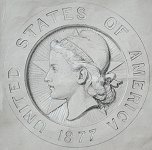 | |
| William Barber's commemorative sketch |
William Barber fell ill while at a seaside vacation in August 1879, and returned to Philadelpha where he died on August 31st. On September 2nd, a special meeting was held at the mint to discuss the life and passing of William Barber. A touching memo from this meeting was presented to his family, describing how well liked and respected he was by his peers at the mint. His son, Charles E. Barber, by then an assistant engraver at the mint was appointed to the position of 6th Chief Engraver by President Rutherford B. Hayes.
William Barber was interred at Mount Moriah Cemetery off Cobbs Creek in Phildelphia, with his wife Anna Maria (died October 1880) and two daughters. Mount Moriah became dilapitated and abandoned, leaving William's final resting place overrun by weeds and brush. Fotunately, a group of volunteers, the Friends of Mount Moriah Cemetery, now maintain an expanding part of the cemetery, including Williams section. His gravesite is in Section 140, near the US Navy section, toward the back. Best entry is off Cobbs Creek Parkway, and head north into the cemetery. Follow the main road to the right, and around to the back. William's grave is near the corner of the main road, prior to where the road turns right toward the Naval Annex. See cemetery layout, along with the satellite finder map below. See also the close-up view, which clearly shows the horizontal gravestone.
Mount Moriah Cemetery Plan
![]()
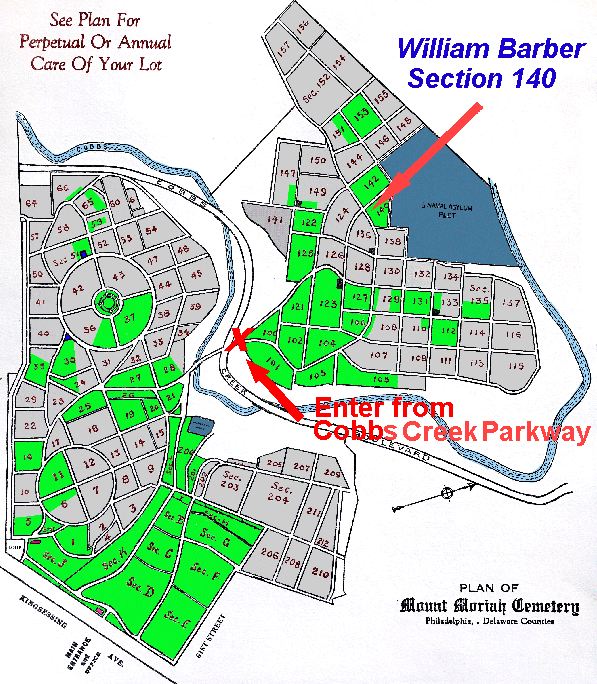
Finder map for Section 140 and William Barber
![]()
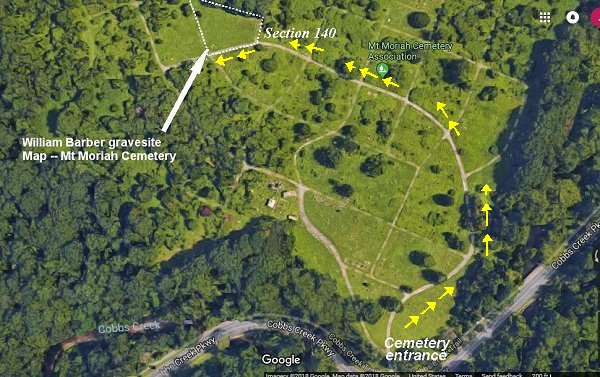
Close-up of Section 140 and William Barber's gravesite (see arrow)
![]()
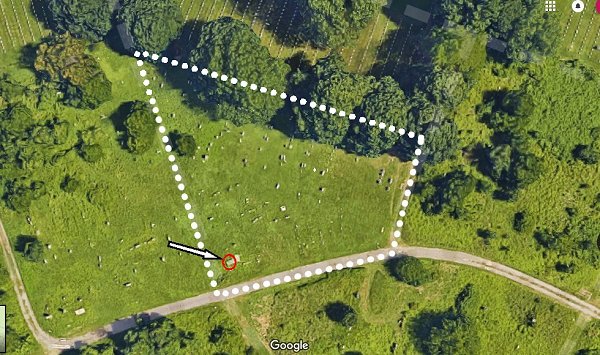
William Barber's gravesite and marker
![]()
